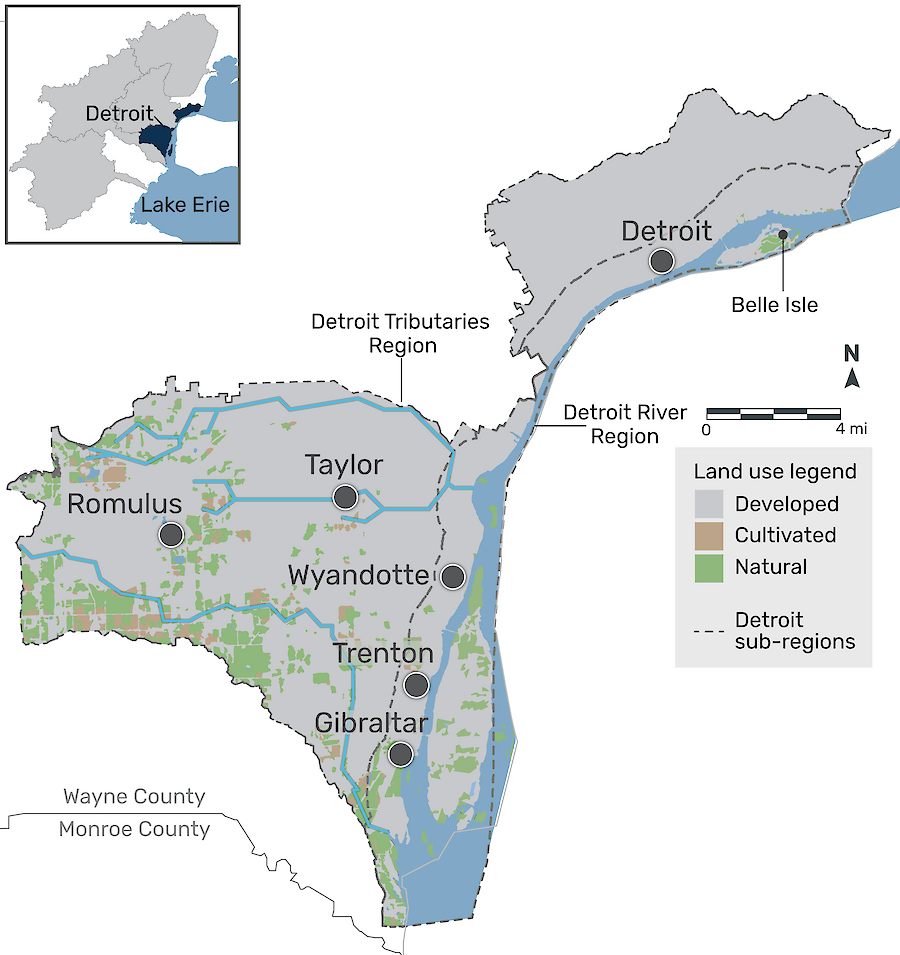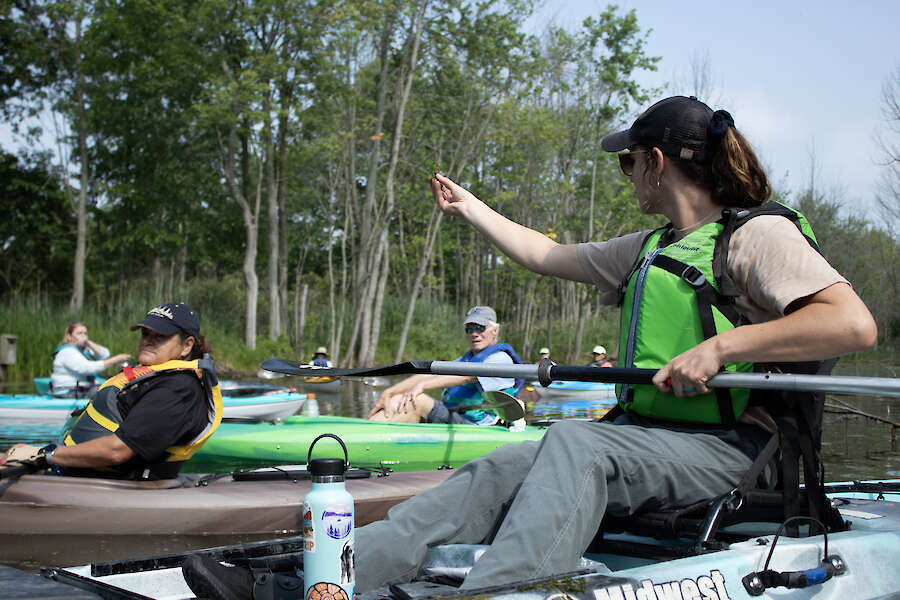 The Detroit River is a 32-mile international strait, situated between Southeast Michigan and Southwest Ontario, linking Lake St. Clair to Lake Erie. With a long history as a transportation corridor, fishery and recreation venue, and a source of drinking water for millions of Metro Detroiters, this water body is known to be the most important economic driver in southeast Michigan. Over 300 years ago, the first Europeans came through the Detroit River, which was inhabited by the three Anishinaabe nations: the Ojibwe, Ottawa, and Potawatomi. The Detroit River valley was rich in wildlife and natural resources. Because of these resources, water transportation accessibility, and strategic location, the population around what is now the City of Detroit grew rapidly. In the 1940s, with the onset of World War II, industry to support the war effort expanded exponentially along with impacts to the river.
The Detroit River is a 32-mile international strait, situated between Southeast Michigan and Southwest Ontario, linking Lake St. Clair to Lake Erie. With a long history as a transportation corridor, fishery and recreation venue, and a source of drinking water for millions of Metro Detroiters, this water body is known to be the most important economic driver in southeast Michigan. Over 300 years ago, the first Europeans came through the Detroit River, which was inhabited by the three Anishinaabe nations: the Ojibwe, Ottawa, and Potawatomi. The Detroit River valley was rich in wildlife and natural resources. Because of these resources, water transportation accessibility, and strategic location, the population around what is now the City of Detroit grew rapidly. In the 1940s, with the onset of World War II, industry to support the war effort expanded exponentially along with impacts to the river.
By the late 1960s, the river was suffering severe effects from decades of unregulated industrial and municipal pollution, combined sewer overflows, excessive stormwater runoff, and contaminated sediments. These impacts resulted in fish and wildlife consumption concerns, tainting of fish and wildlife flavor, degradation of fish and wildlife populations, fish tumors and other deformities, bird and animal deformities or reproductive problems, degradation of benthos, restrictions on dredging activities, restriction on drinking water consumption or taste and odor problems, beach closings, degradation of aesthetics, and loss of fish and wildlife habitat. Each of these issues that have impacted the river’s water and coastal habitats for many decades are now designated as Beneficial Use Impairments (BUIs) for the Detroit River.
Looking Forward to the Future

Kayakers enjoy a guided tour in the watershed.
The Detroit River watershed is vital to the prosperity of the Southeast Michigan and Southwest Ontario regions. It provides drinking water for many, water for industry, subsistence fishing, and opportunities for recreation. This watershed is an environmental treasure, but it also faces challenges. This report card outlines the current status of the Detroit River watershed; the grade reflects historical and ongoing demands on natural resources. Friends of the Detroit River, who contributed to this project, is actively tackling these challenges in their communities. Their work in water quality monitoring, ecosystem restoration, green infrastructure solutions, and deep community engagement is invaluable to the current and future health of the Detroit River watershed.
Facing the challenges of a dynamic and changing landscape in Southeast Michigan requires responsible management of natural resources. In addition to protecting existing habitats, current and future development must be mindful of environmental concerns that impact people and the environment. Management actions informed by science and the community will serve to protect and promote both humanity and the surrounding landscape, ensuring a sustainable and prosperous future. If you’d like to get involved, head to www.detroitriver.org.
